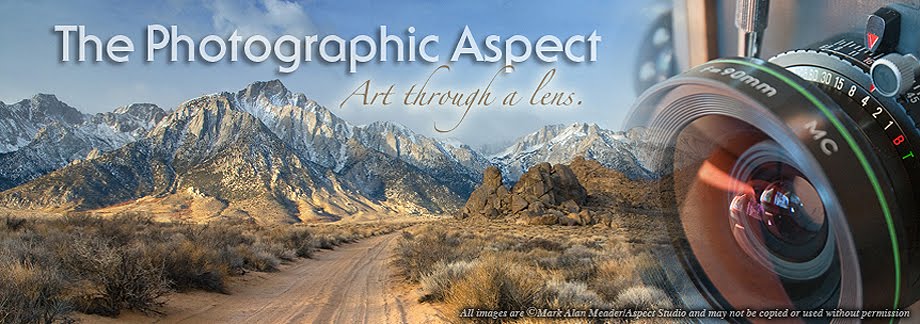Although the color of the waves was quite nice, I found it to be kind of distracting and decided that I preferred a monochrome approach. A few lucky people get to live right here, as you can see at the top of the frame... not a bad spot for your house, huh?
Friday, February 26, 2010
Whoosh! Whump! Boom!... Sunset Cliffs
Although the color of the waves was quite nice, I found it to be kind of distracting and decided that I preferred a monochrome approach. A few lucky people get to live right here, as you can see at the top of the frame... not a bad spot for your house, huh?
Saturday, February 20, 2010
The Mathematics of Nature
Bryce Canyon Sunrise - Utah
Something a little different for this post, inspired by a TV documentary that I saw a few months back, about mathematician Benoit Mandelbrot.
We tend to think of math and geometry as applying to man-made objects.. they have width, height, length and angles that can be expressed and measured in ways that we are familiar with. Nature on the other hand, may seem to be random and chaotic, totally free from the laws of math and geometry. Not so. Mandebrot discovered the formulas that can express most forms of nature in mathematical terms.. it's just a different kind of math, known as "fractals"... the term that he coined for it.In reality, many of the the most amazing things in the natural world follow these fractal formulas: trees and plants, waves, mountain ranges, canyons, clouds, coastlines, even the capillaries within our bodies are all examples.
I'm strictly a visual person, certainly no math whiz... (one year of engineering in college and I realized that my calling was going to be elsewhere), but it's interesting to realize that everything really is tied together, art and science, if you look at it from the right perspective. I leave it to you to read further if you're interested... I came across a really cool website that explains a lot of this in very visual and easy to understand terms here.. most artists, photographers and just plain nature lovers will think: "wow.. this makes total sense!", when they look at these pages. It goes into other art-realated topics also, such as the "golden proportion", known by artists for centuries, and seems to be part of our innate, human sense of beauty.
So, what is an artist's interest in all this? Well, computers have made the application of fractal formulas easy and practical. The other images here (click for a larger view) are ones that I generated using a 3D terrain modeling software. The natural features... rocks, clouds, dunes and even the textures, are all created with fractal math.. there is no actual picture mapping utilized anywhere in the image. I didn't go all out with the detail.. I could keep working for an even more photo-realistic effect, but this is good enough for a comparison to the real photo of Bryce Canyon at the top of this post.
It's basically "virtual photography"... the "camera" acts just like the real deal.. move it around as you wish, select the focal length, depth of field..everything. Of course all the basic principles apply: composition, texture, color theory and lighting. If only the real world was so easy though... you can literally carve and move mountains, then choose the time of day, along with a control of the elements limited only by your imagination. If you've watched a sci-fi, fantasy or animated movie in the last ten years or so, you've surely seen a much more sophisticated use of this technology, but this was done just sitting here at home on my everyday computer. The tree was an afterthought as I was writing and took about 5 minutes to compose and render!
Clouds are not spheres, mountains are not cones, coastlines are not circles,
and bark is not smooth, nor does lightning travel in a straight line.
—Mandelbrot, in his introduction to The Fractal Geometry of Nature
—Mandelbrot, in his introduction to The Fractal Geometry of Nature
Saturday, February 13, 2010
Feelin' Abstract
Friday, February 5, 2010
Lush Green in the Deep Forest
Of the 3 main wine country regions in northern California (the others being Napa and Sonoma), Mendocino is the most remote and least commercialized. The winding road to get here travels past gorgeous vineyards in the Anderson Valley, straight into dark redwood forests and along the wild rocky coast up to the town, which is full of art galleries and boutiques but still manages to remind you of the nineteenth century.
I really wish this area was a little closer to home for me.. it's a bit too far to drive unless we're staying for a while, so we have to fly to Oakland and still drive 3 hours from there... well worth it though.
What I feel is that the picture-taking process, anyway a greater part of it, is an intuitive thing. You can't go out and logically plan a picture, but when you come back, reason then takes over and verifies or rejects whatever you've done. So that's why I say that reason and intuition are not in conflict--they strengthen each other.
- Wynn Bullock
Subscribe to:
Posts (Atom)


